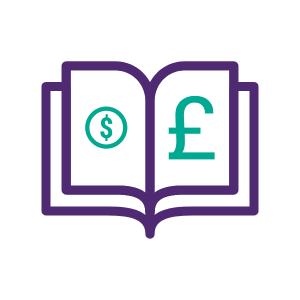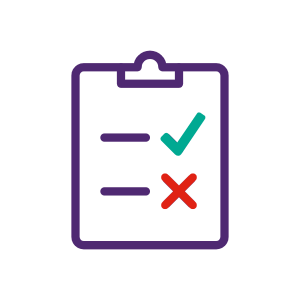Ways to learn Forex trading basics for beginners
Learning how to trade Forex consistently profitably is highly challenging. In contrast, acquiring competence in any profession is also difficult and requires hard work. Why should trading be any different? The key to success is having a desire to become a professional trader and working hard towards your goals.
You can find a lot of educational material online. Most brokers offer their clients tools to learn how to trade forex using certain trading platforms and teach them how to use trading terminology.
Simply copying other traders' strategies will not be effective. Every trader is unique and has a different trading style. What works for one trader may not work for you. The best answer to the question on how to learn Forex is to start. However, keep in mind that until you become proficient and profitable in demo trading, it is not recommended to go live. When starting trading live, you should only risk the amount that you can afford to lose.

Forex trading for beginners takes time and resources. There can be many mistakes on the learning journey. However, mistakes are great opportunities to grow professionally. There are three general ways that traders learn how to trade:
Don't like reading? Watch our Forex introduction video:
- Learning through online guides and trading books
- Learning from signal providers and successful traders
- Learning from your own mistakes
All three of these have their advantages and disadvantages, but let’s focus on some tried and tested strategies.
How to trade Forex for beginners
To open a trading position there are two ways depending on the trading platform. The majority of platforms have buttons displayed right on the price charts to buy or sell the asset. However, this will only open a trading position without stop loss and take profit orders. Sometimes it may be useful for scalpers to initialize trading positions right away to catch the small price movements. For the majority of cases, it may be more sound to click on the corresponding button and open a small menu where you can select the type of order. If you want to open a position right away
Checklist for beginners to execute trading positions
Here is the list of things to do to successfully open a trading position:
- Step 1. Check for the trading setup you have outlined in your trading strategy for initializing the buy or sell order.
- Step 2. Open the menu to select the order type or initialize the position with a click button on the chart.
- Step 3. Select the order type depending on the setup: buy or sell
- Step 4. Select market execution or pending order (limit order, stop order) depending on your trading style and strategy
- Step 5. Set the stop loss from the menu, or edit the trading position to add a stop loss
- Step 6. Set Take profit order or set up the trailing stop if you want to follow the price without a predetermined target
- Step 7. Monitor your trading position and write down it in the trading journal
Learning Forex for beginners doesn't have to be expensive
It might sound surprising, but learning Forex trading for free is a definite possibility in this day and age. There's extensive quality educational material online. Most brokers offer free
demo accounts to their clients. Demo accounts enable traders to place orders in a live trading environment without risking real money. Demo trading is highly useful when learning how to use a trading platform and develop trading strategies.
Demo trading is great for practice, however, they are very different from trading live. Yes, the markets move the same and everything seems similar at one glance, but trading using real funds and using virtual money are two very different things psychologically. When trading live, traders are influenced by greed, fear of losing money, they hope that trades will earn them more, etc. Human emotions are considered a flaw in trading as they can ruin trading balance. When transitioning from demo to live, it's recommended to only use the money you can afford to lose. It's important to gain experience in the markets before you risk your hard-earned dollars.
How can I learn forex trading?
Now, theory is key in learning the absolute fundamentals of FX trading, but putting this knowledge into practice is critical. Forex trading and financial trading in general require strong practical skills and discipline to implement theory into practice. This is true because trading is more of a practical skill than a theory. The demo account is the first step toward gaining practical financial trading experience, however, traders will need to switch to live trading eventually. This is the case because trading on a demo account does not have the same emotional and psychological effects as risking your real money in the markets.
Start on the demo account
You need to learn the basic functionality of your trading platform. Practice till you are able to freely open the trading position, set stop loss and take profit orders, and close it. No theoretical knowledge prepares you for trading as well as actually taking action and opening and closing trades. You will also check the spreads and how the price movement affects your trading position. The demo account is the first step after learning the basics of FX trading. After this, you will have to familiarize yourself with practical trading and develop a trading strategy. Develop a sound trading plan and test it on the demo account by awaiting trading setups and opening trading positions.
Switch to the live trading account
Start small is the key phrase here. Every trader needs to start with a comfortable amount to avoid unnecessary emotional burden during trading. Another key reason to start small is to reduce risks before you can trade profitably. Testing a trading strategy on the demo account is usually different from actually using it in practice on a live trading account. Starting small will ensure the losses are always in accordance with your risk appetite and preserve the account balance. One primary goal for every financial trader is to stay in the game in the long term. The longer you can maintain your trading account, the more chances you will have to acquire trading experience and become consistently profitable.
Exposing yourself to real market risks where your money is on the line is the best teacher for every Forex trader.
The exact steps for getting from demo to live trading should be similar to these:
- Step 1. Open a demo trading account
- Step 2. Familiarize yourself with the trading platform
- Step 3. Develop a trading strategy that outlines rules for opening and closing trades
- Step 4. Backtest your strategy on historical data
- Step 5. Forward test your strategy, meaning trade on the demo account to check the viability of the trading strategy
- Step 6. Tweak and recheck your trading strategy for any errors or inefficiencies
- Step 7. Open a live account and start trading with a small capital
- Step 8. Monitor your trading activity and write down all positions to analyze your performance
Common mistakes that beginners make

Not get prepared for trading
Every trader makes mistakes. Successful traders learn from their own mistakes. They also learn from other people's mistakes. Trading is not like having a job with steady income or a gambling house. Trading professionally is similar to running a business, Some months are profitable, some months are not. Traders should be ready for drawdown periods. If you plan to pay bills from your trading revenue, you will force trades when the market doesn't give you trading opportunities and lose money. Trades should never be done out of necessity. Often, trading is compared to hunting. A trader similar to a hunter should not be wasting bullets on shooting bushes. A good hunter waits for an opportunity, aims and shoots when the conditions are ready. If you are a swing trader or a position trader, you might feel bored while waiting for an opportunity to come. Many swing traders place only one or two trades per month. Boredom can make you place multiple ill-prepared orders. To counter feeling bored, many traders have side hobbies or side businesses.
No prior research
No professional trader wakes up and buys or sells a random pair because he or she feels like it. Trading professionally requires deep knowledge of the currency pairs that you're going to trade. Every currency pair is different: they have different trading volumes, different liquidity, different spreads, etc. It's also highly important to understand the economical and political factors that influence given currencies. Fundamental traders are highly dependent on such data. However, technical traders also need to keep an eye on the economic calendar, as news announcements can increase volatility on the market.
Trading against a trend
Many professional traders trade in and against trend direction, however, it's recommended for novice traders to avoid trading against trends. Placing orders against the market sentiment is dangerous and requires certain skills and experience. Keep in mind that it's not critical to be a genius and guess every tops and bottoms in a trend. It's essential to make money. It's much safer for novice traders to follow trends than look for trend reversals.
No weekly/monthly goals
People with goals succeed in life because they know where they are going. It's as simple as that. Your goals cannot force markets to give you more trading opportunities than it does, however, goals help you stay focused and motivated when trading. Having proper goals are creating healthy expectations and will help you avoid over-trading.
Leverage and trade size
Leverage is undoubtedly a very useful tool when trading Forex, but it’s also super dangerous when overused. CFD trading is highly leveraged. Traders use leverage to increase their purchasing power by borrowed funds from their own broker. Leverage can grow your profits when a trade goes in the predicted direction, and it can also grow your losses too when a trade goes against your plan. Forex learning for beginners should always be focused on risk management, as the failure to manage their risks is the number one reason why most beginner traders lose money. Profitable and consistent trading is based on probabilities. When leverage is overused, single trades become too significant and can lead to blown up trading accounts. What's more, highly leveraged positions can lead to a negative trading balance since traders are using borrowed funds to open positions. Traders might end up losing more than what was on their trading account prior to opening a trade. Luckily, many brokers offer negative balance protection to their clients.
Controlling the impact of leverage on the trading risk is possible by carefully selecting the position size. Trading position size is how much money the trader is allocating for each trading position. Using excessive levels of leverage and trading with large trading lots is especially dangerous for beginner traders. While leverage is a double-edged sword that can cut your balance, position sizing is the way to control this sword effectively